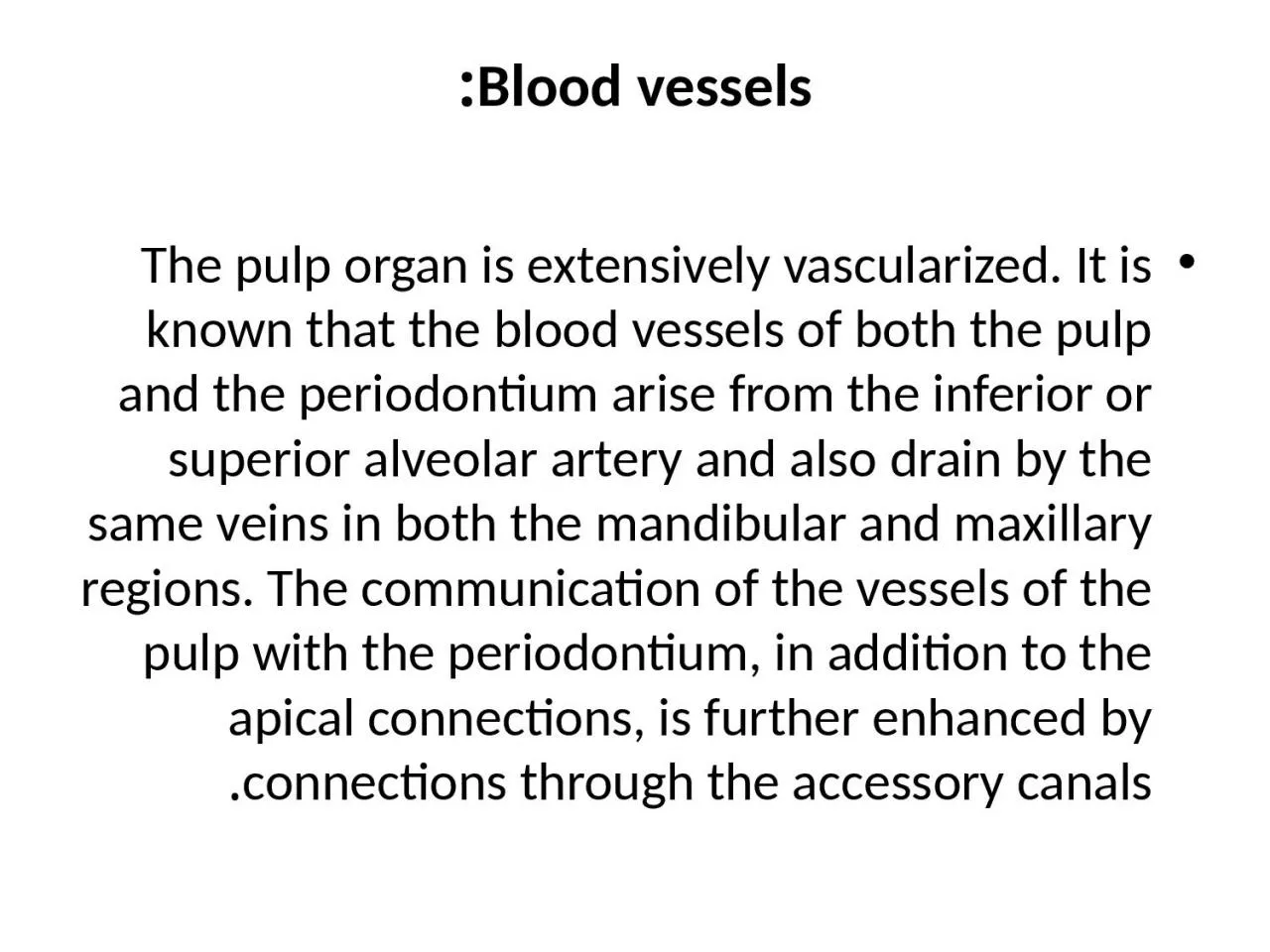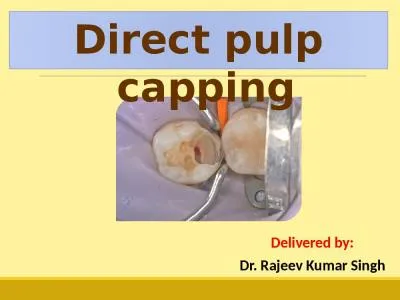PPT-Blood vessels: The pulp organ is extensively
Author : lam | Published Date : 2022-07-01
vascularized It is known that the blood vessels of both the pulp and the periodontium arise from the inferior or superior alveolar artery and also drain by the
Presentation Embed Code
Download Presentation
Download Presentation The PPT/PDF document "Blood vessels: The pulp organ is extensi..." is the property of its rightful owner. Permission is granted to download and print the materials on this website for personal, non-commercial use only, and to display it on your personal computer provided you do not modify the materials and that you retain all copyright notices contained in the materials. By downloading content from our website, you accept the terms of this agreement.
Blood vessels: The pulp organ is extensively: Transcript
Download Rules Of Document
"Blood vessels: The pulp organ is extensively"The content belongs to its owner. You may download and print it for personal use, without modification, and keep all copyright notices. By downloading, you agree to these terms.
Related Documents














